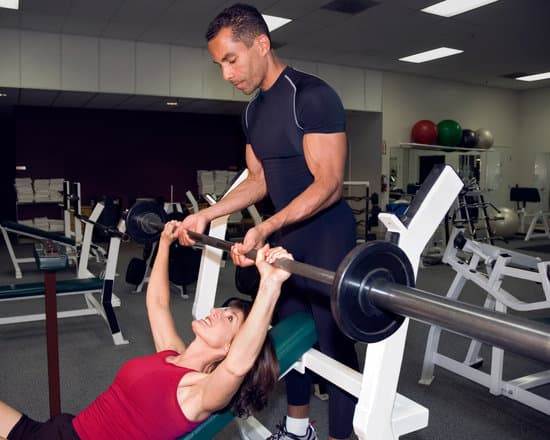In today’s era of increasingly sedentary lifestyles, the question of how physical fitness impacts our overall well-being becomes more important than ever. While many recognize the physical benefits of regular exercise, such as improved cardiovascular health and increased strength, what are the social benefits of physical fitness? This article aims to explore the connection between physical fitness and social wellbeing and shed light on the various ways in which staying active can positively impact our social lives.
The lack of physical activity has become a widespread concern, with more people spending hours sitting at desks or engaging in screen time rather than actively moving their bodies. This sedentary lifestyle not only affects our physical health but also takes a toll on our social connections. Engaging in regular physical activity is crucial for maintaining a healthy balance and nurturing robust relationships.
Beyond improving our own internal sense of wellbeing, being physically fit can have an uplifting effect on how we interact with others. Regular exercise helps foster enhanced self-confidence and self-esteem, allowing individuals to bring their best selves to social situations. When we feel good about ourselves physically, it is reflected in our attitude and body language, leading to positive interactions with others.
Additionally, physical fitness often involves group settings and teamwork, creating opportunities for increased social interaction. Whether it’s participating in team sports or joining group exercise classes, these activities provide a shared experience that can lead to new friendships and a sense of belonging within a community. Thus, prioritizing physical fitness not only has personal benefits but also creates avenues for building meaningful connections with others.
Stay tuned for this enlightening article as we delve deeper into specific ways that physical fitness can enhance your social wellbeing. From improved communication skills to fostering empathy and inclusivity within communities – we will explore each aspect thoroughly to inspire you to embrace physical fitness as a key ingredient in leading a socially enriched life.
Enhanced Self-Confidence and Self-Esteem
Regular physical activity has been shown to have a positive impact on self-confidence and self-esteem. When individuals engage in physical fitness activities, they may experience various improvements in their mental and emotional well-being, which can lead to enhanced self-confidence and higher self-esteem.
Through physical fitness, individuals are able to set and achieve goals, which boosts their confidence in their abilities. For example, someone who initially struggles to complete a certain number of push-ups may gradually build up their strength and accomplish their goal over time. This sense of achievement can greatly enhance one’s self-confidence and belief in their own capabilities.
Additionally, physical activity releases endorphins, hormones that contribute to feelings of happiness and well-being. These positive emotions can positively impact an individual’s overall outlook on themselves and others, leading to improved self-esteem. Feeling good about oneself can also translate into more positive social interactions as individuals may be more willing to engage with others without the fear of judgment or insecurities holding them back.
Furthermore, physical fitness activities often provide opportunities for individuals to challenge themselves and step outside of their comfort zones. Successfully facing these challenges can further increase self-confidence as individuals prove to themselves that they are capable of overcoming obstacles. This newfound confidence can then spill over into other areas of life, resulting in more assertive communication skills and stronger interpersonal relationships.
Increased Opportunities for Social Interaction
Regular physical fitness activities provide individuals with numerous opportunities for social interaction. Many physical fitness activities, such as team sports or group exercise classes, involve working together in a group setting towards a common goal. This not only helps to improve one’s physical health, but also fosters social connections and the development of new friendships.
Engaging in physical fitness activities that require teamwork promotes collaboration and cooperation among individuals. Whether it is playing on a soccer team or participating in a dance class, these activities allow individuals to interact with others who share similar interests and goals. Through these interactions, individuals can build strong bonds and cultivate meaningful relationships.
Additionally, physical fitness activities often present opportunities for individuals to meet new people outside of their immediate social circle. Joining a sports league or attending fitness classes introduces individuals to a diverse range of people from different backgrounds and walks of life. This exposure to different perspectives and experiences can broaden one’s understanding of the world and cultivate a sense of empathy and compassion.
| Social Benefits | Examples |
|---|---|
| Enhanced self-confidence | Individuals feel more confident about themselves which positively impact their interactions with others. |
| New friendships | Physical fitness activities often involve group settings where individuals can meet new people. |
| Inclusivity and diversity | Physical fitness activities bring people from different backgrounds together, promoting inclusivity and diversity. |
Improved Communication Skills
Regular physical fitness activities, such as team sports or fitness classes, can have a positive impact on communication skills. When participating in these activities, individuals are often required to work together and communicate effectively with their teammates. This promotes the development of essential communication skills that can be applied in various social settings.
Effective communication is crucial for building and maintaining relationships. Through physical fitness activities, individuals have the opportunity to practice active listening, clear expression of thoughts and ideas, and effective collaboration. These interactions help individuals become better at expressing themselves and understanding others, ultimately leading to improved communication skills in their personal and professional lives.
Participating in team sports or fitness classes also requires individuals to communicate non-verbally through body language and gestures. This type of communication can enhance interpersonal connections and foster a sense of trust within a group. By focusing on the physical activity at hand while working together towards a common goal, participants learn how to effectively communicate without relying solely on words.
In addition to improving verbal and non-verbal communication skills, physical fitness activities provide a platform for individuals to develop their leadership abilities. Whether it involves coordinating strategies during a game or guiding fellow participants during an exercise class, these opportunities allow individuals to gain confidence in their ability to lead and communicate effectively with others.
| Benefits | Description |
|---|---|
| Enhanced verbal communication | Regular physical fitness activities promote active listening and clear expression of thoughts. |
| Non-verbal communication | Participants learn how to effectively communicate through body language and gestures. |
| Leadership development | Physical fitness activities provide opportunities for individuals to develop their leadership abilities. |
Building a Sense of Community
Physical fitness activities have the power to bring people together and build a sense of community. Whether it’s participating in group exercise classes or joining sports leagues, these activities create a shared experience that fosters connections and a sense of belonging within a community.
The Benefits of Participating in Group Exercise Classes
One of the main ways physical fitness helps build a sense of community is through group exercise classes. These classes often involve individuals with similar interests and goals coming together to work towards their fitness objectives. The shared experience of sweating, pushing oneself, and achieving personal milestones creates a bond among participants.
Over time, this can lead to the development of strong friendships and support systems. Group exercise classes provide an opportunity for individuals to connect, motivate each other, and hold one another accountable for their fitness goals.
Connecting Through Sports Leagues
Sports leagues also play a significant role in building a sense of community through physical fitness activities. Whether it’s playing recreational soccer on weekends or joining a basketball league, these team-based activities foster camaraderie and teamwork. Being part of a sports league allows individuals to collaborate towards common goals while enjoying the game they love. Regular interactions during practices and games build trust and understanding among teammates, creating lifelong friendships beyond the court or field.
Promoting Inclusivity and Diversity
Physical fitness communities have an opportunity to promote inclusivity and diversity by welcoming individuals from all backgrounds. Regardless of age, gender, race, or socioeconomic status, everyone can come together to pursue their physical fitness goals as equals. This inclusiveness not only strengthens social bonds but also challenges stereotypes and fosters mutual respect among participants. By embracing diversity within physical fitness communities, we can contribute to creating more accepting societies both on and off the exercise mat or playing field.
Empathy and Compassion
Regular physical fitness activities not only benefit our physical health but also have a profound impact on our social wellbeing. One significant aspect of social benefits of physical fitness is its contribution towards fostering empathy and compassion towards others. When individuals engage in shared physical challenges, whether it is participating in team sports or group fitness classes, a deeper understanding and empathy for others can develop.
Participating in physical fitness activities often involves working with others towards common goals. This collaboration creates opportunities for individuals to witness the struggles and triumphs of their teammates or workout partners. For example, during a group exercise class, individuals may see someone pushing themselves to their limits or overcoming personal obstacles. Witnessing these experiences can elicit feelings of empathy and compassion as they connect with the emotions and efforts that go into achieving personal goals.
Moreover, physical fitness activities provide an environment where individuals can experience a sense of camaraderie and support from others who are going through similar challenges. Whether it is running a marathon together or joining a cycling team, these shared experiences create bonds among participants that promote unity and mutual understanding. The awareness of each other’s efforts fosters empathy as individuals navigate the ups and downs of their fitness journeys.
Reducing Social Isolation and Loneliness
Physical fitness plays a significant role in reducing social isolation and loneliness in today’s society. With the rise of technology and sedentary lifestyles, many individuals find themselves feeling disconnected from others and lacking meaningful social interactions. However, engaging in physical fitness activities provides opportunities for social engagement and helps combat these feelings.
One of the primary ways that physical fitness reduces social isolation is by providing opportunities for social interaction. Many physical fitness activities, such as group exercise classes or team sports, involve working together in a supportive and collaborative environment. These settings allow individuals to connect with others who share similar interests and goals, fostering a sense of belonging and camaraderie.
Furthermore, participating in physical fitness activities can help individuals build new friendships and expand their social networks. Whether through joining a running club or attending fitness workshops, individuals have the chance to meet like-minded people who have similar passions for active living. This not only encourages social connections but also provides a support system that can enhance overall wellbeing.
To effectively reduce social isolation and loneliness through physical fitness, it is crucial to create inclusive and welcoming environments for all individuals. By promoting diversity within physical fitness communities, people from different backgrounds feel encouraged to participate, making it easier to form connections with others outside their usual circles. Embracing inclusivity ensures that everyone feels valued and accepted for who they are, fostering a sense of belonging within the fitness community.
Positive Impact on Mental Health
Regular physical fitness has not only physical benefits but also positive impacts on mental health. Engaging in exercise and other physical activities can significantly improve overall mental wellbeing, reducing symptoms of depression and anxiety.
Exercise has been proven to increase the release of endorphins, which are natural chemicals in the brain that promote feelings of happiness and well-being. This can help alleviate symptoms of depression and boost overall mood. In addition, physical activity promotes the production of neurotransmitters like dopamine and serotonin, which are often referred to as “feel-good” chemicals. These neurotransmitters play a crucial role in regulating mood and promoting a sense of calmness.
Furthermore, participating in physical fitness activities can provide individuals with a sense of purpose and accomplishment, which is essential for maintaining good mental health. Setting achievable goals for exercise can enhance self-esteem and improve self-confidence. Reaching these goals not only leads to physical improvements but also provides individuals with a sense of achievement that positively impacts their mental state.
Engaging in regular physical activity also helps improve sleep quality, reduces stress levels, and increases resilience to stressors. Physical fitness promotes better sleep patterns, allowing individuals to feel more rested and refreshed. Additionally, it serves as a healthy outlet for stress reduction by releasing tension and promoting relaxation.
Encouraging Inclusivity and Diversity
Physical fitness activities have the power to bring people from diverse backgrounds together, creating a space that encourages inclusivity and promotes diversity. In today’s increasingly interconnected world, it has become more important than ever to foster understanding and respect for individuals from different cultural, ethnic, and socioeconomic backgrounds. Engaging in physical fitness can play a significant role in achieving this goal.
One of the key ways that physical fitness promotes inclusivity is by providing a shared goal or activity that brings people together regardless of their differences. Whether it’s participating in a group exercise class, joining a sports league, or attending a community workout event, individuals from various backgrounds can come together around a common interest: improving their physical health and wellbeing.
This shared goal creates an environment where people can connect and form relationships based on mutual enthusiasm and support.
Furthermore, physical fitness activities often require collaboration and teamwork, which inherently promote inclusivity. When individuals must work together towards achieving a common objective, they learn to appreciate each other’s strengths and contributions irrespective of their individual differences. Through collaboration and teamwork in physical fitness settings, barriers are broken down, stereotypes are challenged, and inclusive environments are created.
Promoting inclusivity within physical fitness communities is crucial not only for the social wellbeing of individuals but also for society as a whole. By embracing diversity within these spaces and encouraging people from all walks of life to participate, we create an environment where everyone feels welcome and valued. This not only enhances individual experiences but also contributes to building stronger communities that thrive on mutual respect and understanding.
Conclusion
In conclusion, physical fitness plays a significant role in promoting social wellbeing and enriching one’s life. Through regular physical activity, individuals can enjoy a wide range of social benefits that contribute to positive interactions, personal growth, and overall happiness. By engaging in physical fitness activities such as team sports, group exercise classes, or outdoor adventures, individuals not only improve their physical health but also enhance their social connections.
One of the key social benefits of maintaining physical fitness is the boost in self-confidence and self-esteem. When individuals engage in regular exercise and see improvements in their strength, endurance, or appearance, they often experience a sense of accomplishment and pride. This newfound confidence translates into improved social interactions as they feel more comfortable expressing themselves and pursuing new relationships.
Additionally, physical fitness activities provide increased opportunities for social interaction. Whether participating in a team sport or joining a group exercise class, individuals are exposed to new people with similar interests. These shared experiences often lead to the formation of close friendships and social connections that extend beyond just the realm of exercising together.
Furthermore, embracing physical fitness can foster a sense of community by bringing people together through shared goals and experiences. Participating in group activities like exercise classes or sports leagues allows individuals to feel a sense of belonging within their community. As they work towards common objectives or face challenges together, bonds are formed that extend beyond the confines of the gym or playing field.
Frequently Asked Questions
What Are the Social Benefits of Fitness?
Engaging in regular fitness activities can have numerous social benefits. Firstly, it provides an opportunity for individuals to connect and interact with others who share similar interests. Whether it’s joining a sports team, attending group fitness classes, or participating in outdoor activities, these interactions help build social connections and enhance a sense of belonging.
Additionally, fitness can be a great way to meet new people and expand one’s social network. It provides common ground for conversation and can lead to the formation of new friendships. Lastly, exercising together can foster teamwork and cooperation, promoting a positive social environment where individuals support and motivate each other towards achieving their goals.
What Are the Social Benefits of Physical Play?
Physical play is not only fun but also has several social benefits to offer. When children engage in physical play together, such as playing tag or practicing sports, they learn important social skills. Through such activities, they develop communication skills, as they need to convey instructions or negotiate rules with their peers.
Physical play also encourages teamwork and cooperation as children often have to work together towards achieving shared goals or winning a game. Moreover, physical play helps children develop empathy by teaching them how to take turns, follow rules fairly, and show respect for others’ boundaries. These social benefits help enhance their overall social competence and contribute to their interpersonal relationships both inside and outside the context of play.
What Are the Social and Emotional Benefits of Physical Activity?
Physical activity not only has positive effects on physical health but also plays a significant role in promoting emotional well-being and healthy social development. Regular physical activity has been shown to reduce stress levels by triggering the release of endorphins – the body’s natural mood boosters. This can improve overall emotional resilience and provide better coping mechanisms for dealing with daily stresses and challenges.
Furthermore, engaging in physical activity often involves working alongside others or being part of a team, fostering important social skills like communication, cooperation, leadership, and problem-solving abilities which are crucial both throughout childhood and into adulthood. By providing opportunities for social interaction and promoting emotional well-being, physical activity helps individuals develop a strong sense of self-esteem, improve their self-confidence, and build meaningful relationships with others.

Passionate about providing useful information to anyone with an interest in the field of Personal Training, I strive to pass on to our readers quality information and to answer any questions about Personal Trainers, the work they do and how to become one.





